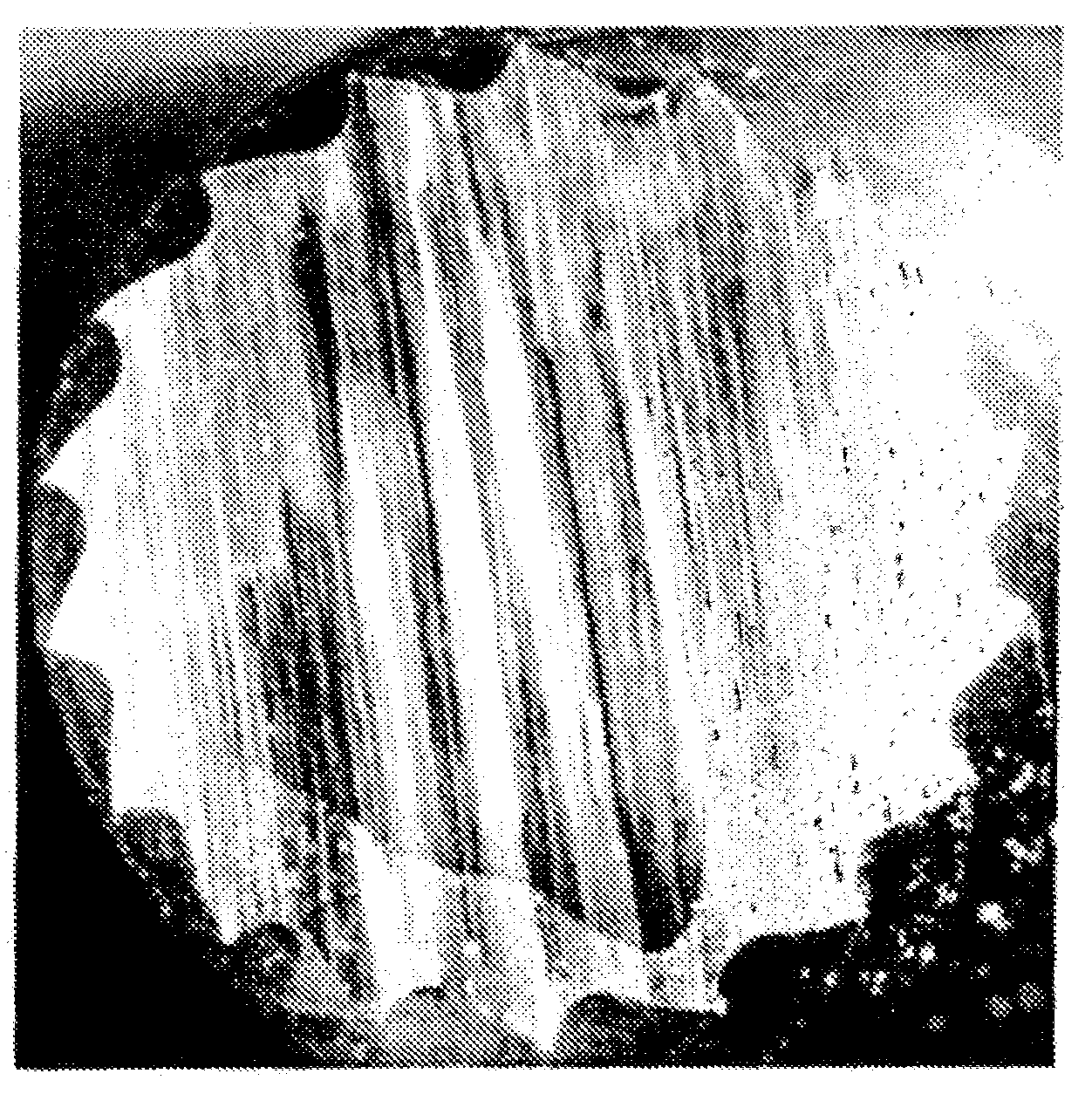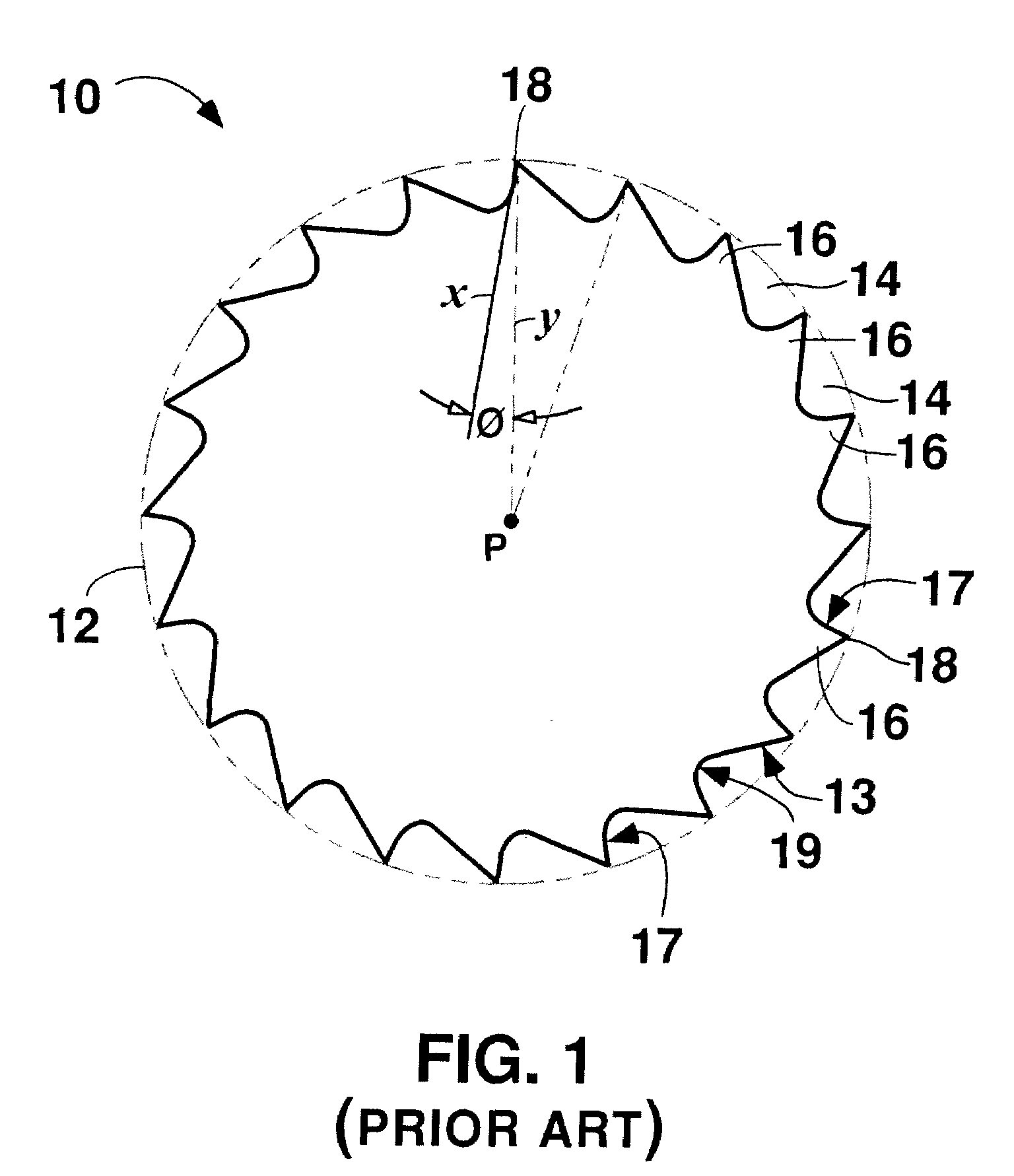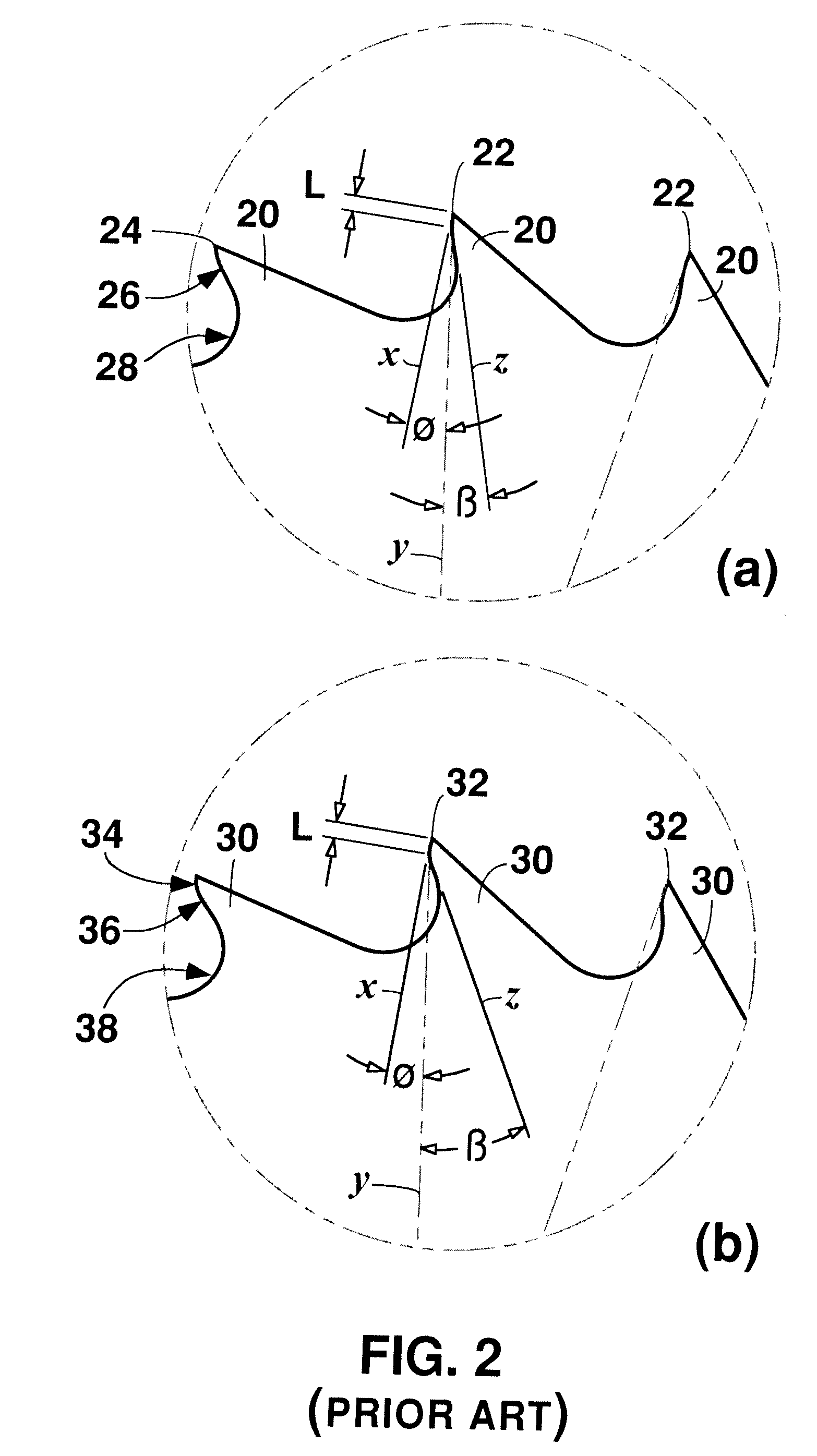Rotary Burr Comprising Cemented Carbide
a technology of cemented carbide and rotary burrs, which is applied in the field of tools, can solve the problems of creating ragged edges or small protrusions referred to as “burrs” on metallic articles, urgent and as-yet unsatisfactory need to develop improved tools capable of efficiently and cost-effectively machining difficult-to-machine materials, etc., and achieves the effect of improving cutting performance and tool wear resistance, improving efficiency and cost-effectiveness
- Summary
- Abstract
- Description
- Claims
- Application Information
AI Technical Summary
Benefits of technology
Problems solved by technology
Method used
Image
Examples
embodiment 10
[0041]Aspects of embodiments of rotary burrs constructed according to the present disclosure will be understood by comparing such tools with FIG. 1, which is a schematic cross-sectional view approximately mid-way along the length of the working portion and at a right angle to the rotational axis of an embodiment 10 of a conventional cemented carbide rotary burr. As used herein, the “working portion” of a rotary burr is the region of the tool that has been ground or otherwise machined to include the cutting teeth. The working portion may also be referred to as, for example, the “burr head” of the tool. Dotted line 12 indicates the original periphery of the tool blank which has been ground at one end to form the working portion of the rotary burr 10. The rotational axis of rotary burr 10 is indicated as point P, and the tool further includes flutes 14 defining teeth 16. Each tooth 16 includes a front face 17, a tip 18, and a back face 13, which leads into an arc 19 transitioning to th...
embodiment 40
[0045]FIG. 3 is a schematic cross-sectional view approximately mid-way along the working portion and at a right angle to the rotational axis of another conventional cemented carbide rotary burr embodiment 40 showing the profile of teeth 46, defined by flutes 44, about the circumference of the rotary burr 40. Dotted line 42 is the original periphery of the blank from which the rotary burr 40 was ground. Each tooth 46 depicted about the cross-section of burr 40 includes a tip 41, a radial land 47 between the tooth front face 48 and the tooth back face 49, and each radial land 47 approximates the original periphery 42 of the cylindrical blank from which the tool was ground. Using lines Y drawn from the cylindrical axis P to adjacent tooth tips 41 and lines X drawn from a tooth tip 41 and along the surface of the front face 48, it will be seen that the front face angle Ø of each tooth is a negative angle as the rotational direction from line X to line Y for a particular tooth is counter...
PUM
| Property | Measurement | Unit |
|---|---|---|
| Angle | aaaaa | aaaaa |
| Composition | aaaaa | aaaaa |
Abstract
Description
Claims
Application Information
 Login to View More
Login to View More - R&D
- Intellectual Property
- Life Sciences
- Materials
- Tech Scout
- Unparalleled Data Quality
- Higher Quality Content
- 60% Fewer Hallucinations
Browse by: Latest US Patents, China's latest patents, Technical Efficacy Thesaurus, Application Domain, Technology Topic, Popular Technical Reports.
© 2025 PatSnap. All rights reserved.Legal|Privacy policy|Modern Slavery Act Transparency Statement|Sitemap|About US| Contact US: help@patsnap.com



